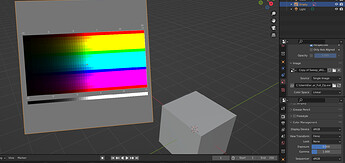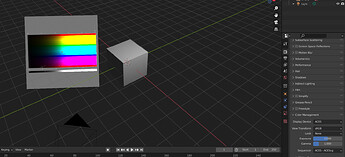Do you realize what you are talking about here is possible with just OCIO? Current Blender’s problem is that Blender still has a lot of parts that are not OCIO aware, which means they are not color managed. This is the main obstacle to the system you described, not “the absence of ACES”. Adding ACES in now does not solve the problem, instead we should continue to make every inch of Blender to be OCIO aware and the system you described will eventually be there. This is why some time ago in another thread Troy said Blender doesn’t need ACES, what it needs is to make sure all of its parts are properly OCIO configurable. After that then the next step would be adding more colorspaces and maybe change the rendering space to something wider like Rec. 2020 (this would also make the compatibility work between Spectral and RGB rendering easier)
I can show you easily the problem, just try drag and drop an HDRI exr into the viewport as a reference image “empty”. Then you can see there is no way to view that image properly through Filmic.
The reason I believe is that:
This means it would be exactly the same even if you use ACES:
ACES just does not solve the problem we need to solve in Blender.
And here I am going to drop more quotes:
Troy: That is, ACES is nothing much more than an overly complicated REC.2020. The jury is still out as to whether or not everyone will get on the train, and it’s rather fractured.
from Is "Filmic Blender" the newest buzzword ever since Andrew Price's new video? - #69 by troy_s - Blender and CG Discussions - Blender Artists Community
Troy: Finally, Blender is not colour managed. Had it been, Filmic would have been wide gamut using BT.2020 primaries.
Until Blender is fully colour managed, it simply isn’t ready to make the leap to wide gamut working spaces. The audience is barely ready as a whole, and the developers won’t have a care in the world until that pressure develops.
from: Installed ACES color management to Blender now im confused! - #5 by troy_s - Technical Support - Blender Artists Community
Because adding ACES in now does not solve any of the color management problem Blender is facing now, it would only make things more complex and confusing.

